Picasso potato variety
Picasso is a late-ripening high-yielding variety of table potatoes. It was bred in the Netherlands by the specialists of the Agrico company. It was entered into the state register of plants of the Russian Federation in 1995. The full growing season is 110 - 120 days. The period of wilting and dying off of the tops is in the range of 140 - 150 days. Favorable regions for the growth of this potato are Central (Bryansk, Vladimir, Ivanovsk, Kaluga, Moscow, Ryazan, Smolensk and Tula regions) and Central black earth (Belgorod, Voronezh, Kursk, Lipetsk, Oryol and Tambov regions).
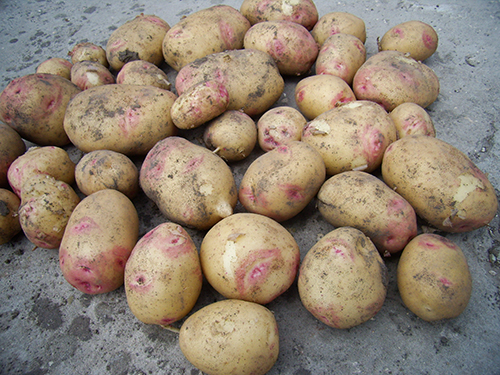
The plant in Picasso is tall, of an intermediate type, with sprawling large leaves of a dark green color. The corolla is small. Abundant flowering. The flowers are white. Berry formation is rare.
The tuber has a rounded oval shape. The peel is yellow. The eyes are shallow, reddish, evenly distributed over the tuber. The appearance of the tuber is very attractive, in fact, because of the color range of the tuber, this potato got its name. The pulp is creamy.
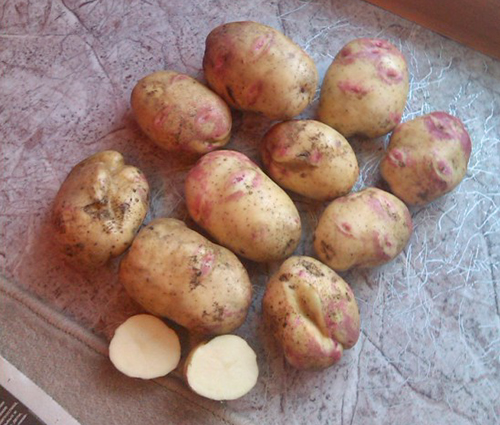
The tuber is large enough (about 100 - 120 grams), with an even surface. Starch content is relatively low for late-ripening potatoes - 10 - 12%. The potatoes are not boiled during cooking. The tuber is suitable for all types of culinary dishes and tastes good.
Marketable yield in the Central region is 190 - 315 c / ha, which is at the level of the Veras standard and 95 c / ha higher than the indicators of the Temp variety. The maximum yield is 320 c / ha, which is at the level of the Istra standard. In the Central Black Earth Region, the marketable yield is 190 c / ha, which is 67 c / ha higher than the standard Lorch... The mass of a commercial tuber is 75 - 130 grams. Marketability 80 - 95%, which is 4.3% higher than the Temp variety, at the level of the Veras standard. Keeping quality 83 - 90%, which is 2 - 10% higher than standards.

The Picasso variety is completely unpretentious, tolerates drought and heat well, but requires good fertilization, otherwise the taste degenerates over time. No germination is required before planting, but is recommended to accelerate ripening. The planting should be done with a distance of 40-50 cm between the bushes, this is due to the spreading tops of the plant. If planting is more frequent, then the tubers are uprooted and turn green. Observing such simple rules of cultivation, you can achieve good yields - about 17 - 19 tubers per bush.
The presented potato variety is immune to cancer, viral diseases such as YN and A, as well as to the potato nematode. It perfectly resists common scab and late blight of tubers, but the resistance to late blight of tops is low. Very susceptible to Y NTN virus. Moderately affected by leaf twisting and common scab.
The Picasso variety is perfectly stored until late spring without seedlings, the tubers retain a good presentation and do not wither. Preservation is about 90%.


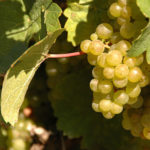
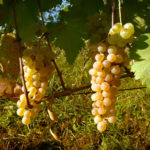

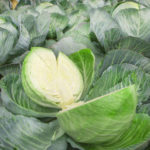



The main advantage of this variety is its wonderful taste. Potatoes boil well and quickly. And from it you get mashed potatoes without lumps. The tubers are even; when peeling, a minimum of peel waste remains. It is stored in the cellar until June, does not wrinkle and does not turn black.
The first time we tried this potato in the Azov region on our site 2 years ago. We planted 4 varieties, including this one. Summer turned out to be very hot and dry, so most of the potatoes suffered from diseases, lack of moisture and pests. Only Picasso pleased with the harvest. No ring rot, no scab, no late blight. The tubers were quite large and were slightly ahead of other varieties in number in one hole.The potatoes taste good, but I personally like it to be softer, boiled, like Kubanka. It is stored well, this is another of its advantages. When planting the seed, we did not germinate it. Our lands are black earth, they did not fertilize. In the second year, the harvest was also good and again practically did not hurt.
I liked the variety. The most important thing is that in spring the potatoes look as if they had just been harvested. This is the main argument for sale, we have a large personal plot. Before planting, we definitely warm up the seeds, then the potatoes rise quickly and give a good harvest. Picasso is pleasant to peel, very little peel goes to waste, due to the lack of eyes. We try not to use one variety for a long time, after three - maximum four years we renew seed potatoes. The dishes are excellent. I love when potatoes are in soup or borscht, and not when they are boiled and you won't find them there.
We have been planting Ivan da Marya for twenty years. For the last three years, potatoes have begun to come across very similar, but still different in taste. It turned out to be Picasso. We have a vegetable garden without watering, black soil. We spill only once a summer in a severe drought (this is very laborious - a pumping station, fire hoses to an artificial canal). Here are our conclusions. Ivan da Marya is a tasty medium-yielding variety. Almost does not bloom. Suitable for soup, and for mashed potatoes, and just boil round timber. On the cut, white, delicate, cut like butter. In a dry harvest year, there are no large tubers. Picasso is a very productive, good variety. It is also suitable for everything, but it quickly boils in soup if you do not keep track. Lump-free puree. In the context, it is creamy, it tastes like grains when cut (not critical). The bushes are huge, in a year, when there is a prolonged heat, then it rains, tubers are formed in the form of pupae. It is inconvenient - neither to clean it, nor to sell it. In normal weather, the harvest is excellent. This is our experience.